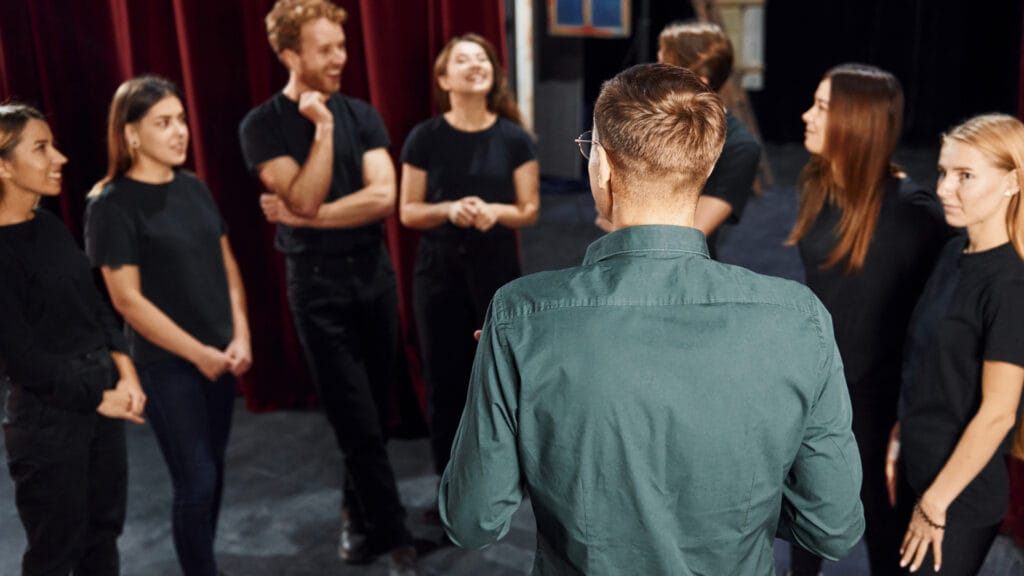Breaking Down Different Acting Techniques: Stanislavski vs. Meisner
Acting is a multifaceted art form that requires skill, dedication, and a deep understanding of various techniques.

Among the many approaches to acting, two methods stand out as foundational pillars: the Stanislavski method and the Meisner technique. Understanding the nuances and differences between these two approaches can provide valuable insights for aspiring actors and acting enthusiasts alike.
Stanislavski Method: Delving into the Depths of Character
Developed by Russian actor and director Constantin Stanislavski in the late 19th and early 20th centuries, the Stanislavski method revolutionized the way actors approached their craft. At its core, this method emphasizes the importance of psychological realism and emotional truth in performance. Stanislavski believed that actors should strive to fully inhabit the inner life of their characters, tapping into their own memories, emotions, and experiences to create authentic portrayals on stage.
Key elements of the Stanislavski method include:
- Emotional Memory: Actors using the Stanislavski method are encouraged to draw upon their own memories and experiences to evoke genuine emotions in their performances. By recalling past events that elicit the desired emotional response, actors can infuse their characters with a sense of authenticity and depth.
- Objective and Super-Objective: Stanislavski emphasized the importance of understanding the objectives of both the character and the overarching storyline. Actors are encouraged to identify their character’s goals and motivations, as well as the broader themes driving the narrative, to inform their performance choices.
- Sense Memory: This technique involves engaging the five senses to create a vivid and immersive experience for both the actor and the audience. By focusing on sensory details, such as sight, sound, touch, taste, and smell, actors can enhance their connection to the character and the world of the play.
Meisner Technique: Living Truthfully in Imaginary Circumstances
In contrast to the introspective approach of the Stanislavski method, the Meisner technique, developed by American actor and teacher Sanford Meisner, places greater emphasis on spontaneity, instinct, and truthful reactions. Meisner believed that effective acting stemmed from genuine, in-the-moment responses to the stimuli provided by scene partners and the environment.
Key elements of the Meisner technique include:
- Repetition: At the heart of the Meisner technique is the repetition exercise, in which actors engage in a back-and-forth exchange of simple phrases with their scene partners. Through repetition, actors learn to listen and respond truthfully, allowing emotions to emerge naturally without premeditation.
- Living Truthfully Under Imaginary Circumstances: Meisner emphasized the importance of grounding performances in reality, even when portraying fictional characters in imaginary situations. Actors are encouraged to react authentically to the given circumstances of the scene, drawing from their own instincts and observations of human behavior.
- Moment-to-Moment Acting: This concept involves staying fully present and responsive to the immediate actions and reactions unfolding in the scene. By relinquishing control and surrendering to the unpredictability of the moment, actors can achieve a heightened sense of spontaneity and authenticity in their performances.
Comparative Analysis: Stanislavski vs. Meisner
While both the Stanislavski method and the Meisner technique share a commitment to truthfulness and emotional depth in acting, they diverge in their approaches to achieving these goals. Stanislavski’s method encourages actors to delve inward, mining their own psyche for rich emotional material, while Meisner’s technique focuses on external stimuli and the dynamic interplay between actors in the present moment.
In terms of preparation, Stanislavski’s method may involve extensive character analysis and emotional exploration, whereas Meisner’s technique prioritizes spontaneous reactions and improvisation. Additionally, the Stanislavski method often incorporates detailed script analysis and extensive rehearsal, whereas the Meisner technique places greater emphasis on live performance and the immediacy of the actor-audience relationship.
Ultimately, the choice between these two approaches depends on the individual actor’s preferences, strengths, and artistic goals. Some actors may find resonance and fulfillment in the introspective journey of the Stanislavski method, while others may thrive on the dynamic energy and improvisational freedom of the Meisner technique. By understanding the principles and techniques underlying each approach, actors can broaden their toolkit and develop a versatile skill set to tackle a wide range of roles and challenges.
Conclusion
In the world of acting, there is no one-size-fits-all approach. The Stanislavski method and the Meisner technique represent two distinct yet equally valuable paths towards authentic, compelling performances. By exploring the principles and practices of these methods, aspiring actors can deepen their understanding of the craft and embark on a lifelong journey of growth and discovery in the world of theater and performance.


